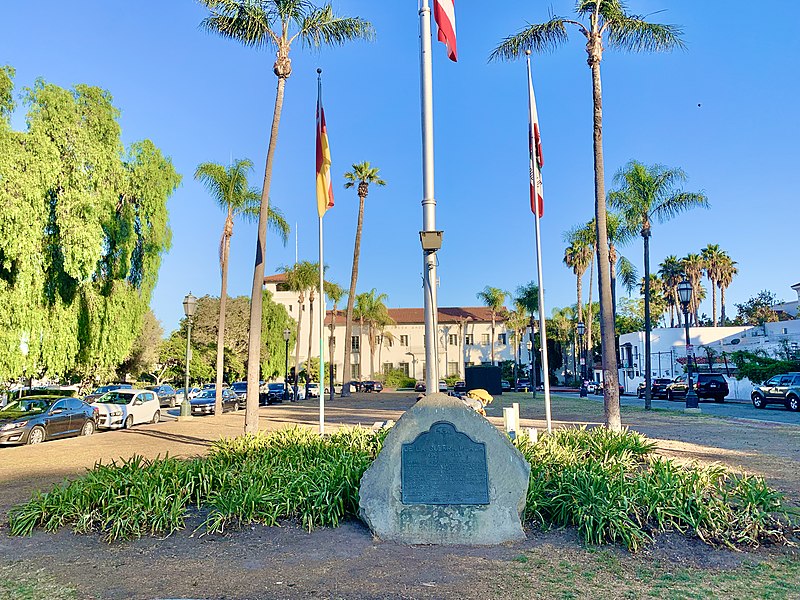Save De la Guerra Plaza
Revitalization or Barren Hardscape?

De la Guerra Plaza is one of the most historic sites in our community. Jose de la Guerra was the preeminent leader in early Santa Barbara history. Born in Spain in 1779, De la Guerra became commandante of the Santa Barbara Presidio in 1815 and remained in this capacity until the early 1840s — a time during which, according to Santa Barbara historian Walter Hawley, “the presidio passed through the best days of its existence.”
The Spanish and then Mexican presence in early California was tiny, as was the Native American population. It is estimated there were about 10,000 to 12,000 Europeans in all of Alta (Upper) California and perhaps 20,000 Native Americans in 1840. About a tenth of these totals lived in Santa Barbara. It was, with Monterey, one of the two leading centers in Alta California.
Jose de la Guerra dominated Santa Barbara civic and social life during this period. His home — Casa de la Guerra — anchored the northern side of De la Guerra Plaza, which was at the center of the town of Santa Barbara, the Mission being located two miles away. Perhaps 90 percent of the European populations lived within a few hundred yards of Casa de la Guerra and De la Guerra Plaza. All important visitors to Santa Barbara visited Jose at his adobe mansion. Many memorable social occasions occurred in the plaza, some with echoes that remain to this day.
De la Guerra Plaza was the first city property “hereby constituted and set aside forever” by the Santa Barbara Common Council as a “City Square and Promenade” in 1853. Four members of the De la Guerra family — Francisco, Joaquin, Pablo, and Antonio — served as mayor in Santa Barbara’s first decade as a state in the United States. According to David Gebhard, through the early 20th century, Santa Barbara “remained the most Hispanic city in California.”
Various adobes surrounded De la Guerra Plaza — which originally had a more rectangular layout — including adobes of the Carrillo, Gutierrez, and Ortega families. The plaza was the site of Santa Barbara’s first city hall, fire building, and jail. In 1922, Santa Barbara voters approved by a margin of six-to-one a bond measure for construction of the current City Hall, which allowed restoration of De la Guerra Plaza as a physically unencumbered open space in close to its current form.
Fiesta Mercado has been located in De la Guerra Plaza since the 1920s. The location of both City Hall and the Santa Barbara News-Press building adjacent to the plaza has made it a central gathering point for political events and rallies of all sorts from all perspectives for a century. De la Guerra Plaza clearly qualifies as a city historic landmark and for placement on the National Register of Historic Places. Casa de la Guerra is already on the National Register of Historic Places, as is El Paseo; Casa de la Guerra is also a California Historical Landmark.
It is most unfortunate that the current “revitalization” proposal for De la Guerra Plaza foresees a radically different plaza — one that would consist entirely of a hardscape and remove all lawn area. A 2011 study of De la Guerra Plaza found that its vegetation has “retained its integrity of design, setting and feeling”; the plaza’s “historic pattern of land use has retained its integrity”; and the “views and vistas of the plaza have retained their integrity of location, setting, and feeling.”
Now is the time for Santa Barbarans concerned about the loss of this historic oasis in the heart of downtown to step forward and make their voices heard. Unless the “revitalization” process changes course to a more fruitful direction, historic De la Guerra Plaza would be lost forever.
Lanny Ebenstein is a member of the Committee to Save De la Guerra Plaza.



